
Will Coldwell, The Guardian, April 28, 2015
It’s 11pm and I’m cycling slowly through the streets of Nørrebro, with the Dunkel Radio crew – a collective of DJs and producers pushing Copenhagen’s underground electronic music scene. Co-founder Najaaraq Vestbirk is pedalling beside me on a hefty Christiania bike and she has another member of the team, Emma Blake, tucked up in its cargo box under a blanket with a can of beer and two record bags wedged between her legs.
“You can actually get beer holders for bikes here,” Najaaraq says as we ride. “In the early hours of the morning you’ll see, like, four people hanging off one bike.”
The Danish capital may have a village-like vibe (believe me, going clubbing by bicycle in London is a lot more intense), but the city has a close-knit underground scene that continues to grow, not just in terms of output – new labels, nights and parties are popping up – but in audience too.
Dunkel is at the centre of this. Carrying the torch for the legendary former club of the same name and the place where they met, the collective – which Najaaraq co-founded with 19-year-old house DJ and producer Daniel Bruhn – has been working hard to create new connections and expand Copenhagen’s nightlife family. I spent the weekend (increasingly shakily) following them around by bike as they showed me round some of their favourite spots to party in the city.
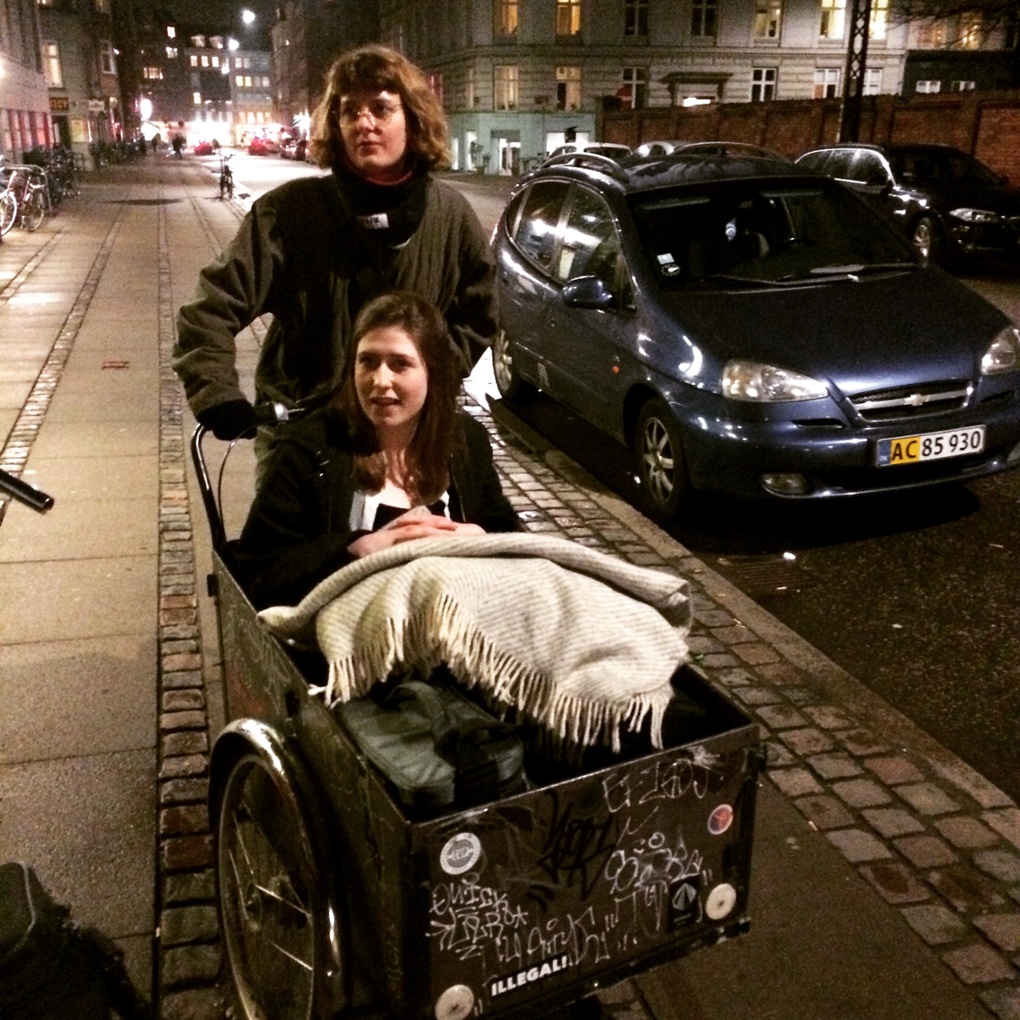
Najaraaq delivers Emma to the club. Photograph: Will Coldwell for the Guardian
And it starts weird. Our meeting point is Vibes Apotek, and by way of introduction I’m handed a can of beer and a laughing gas balloon. Opened a couple of years ago by a guy known for turning up to clubs dressed as a gorilla, it’s something of a den for hippy crack. It also sells absinthe. It’s all about the vibes, y’know.
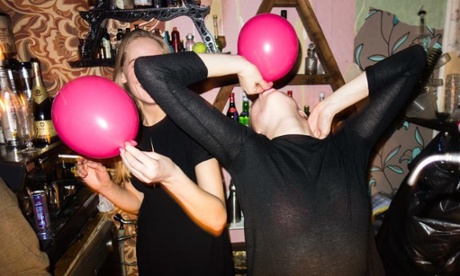
Having a gas: Vibes Apotek. Photograph: Jonas Kjergaard
It’s also a good place to kick off an evening. We sneak into a small back room with a persian rug for a door and slump into the antique furniture. I ask Najaaraq how the scene compares with Europe’s more prominent clubbing cities. “It’s small but very fruitful,” she says. “It’s hard to navigate, but if you want to see the new generation we have all these weird spaces where events are going on. And the DJs are fucking good.”
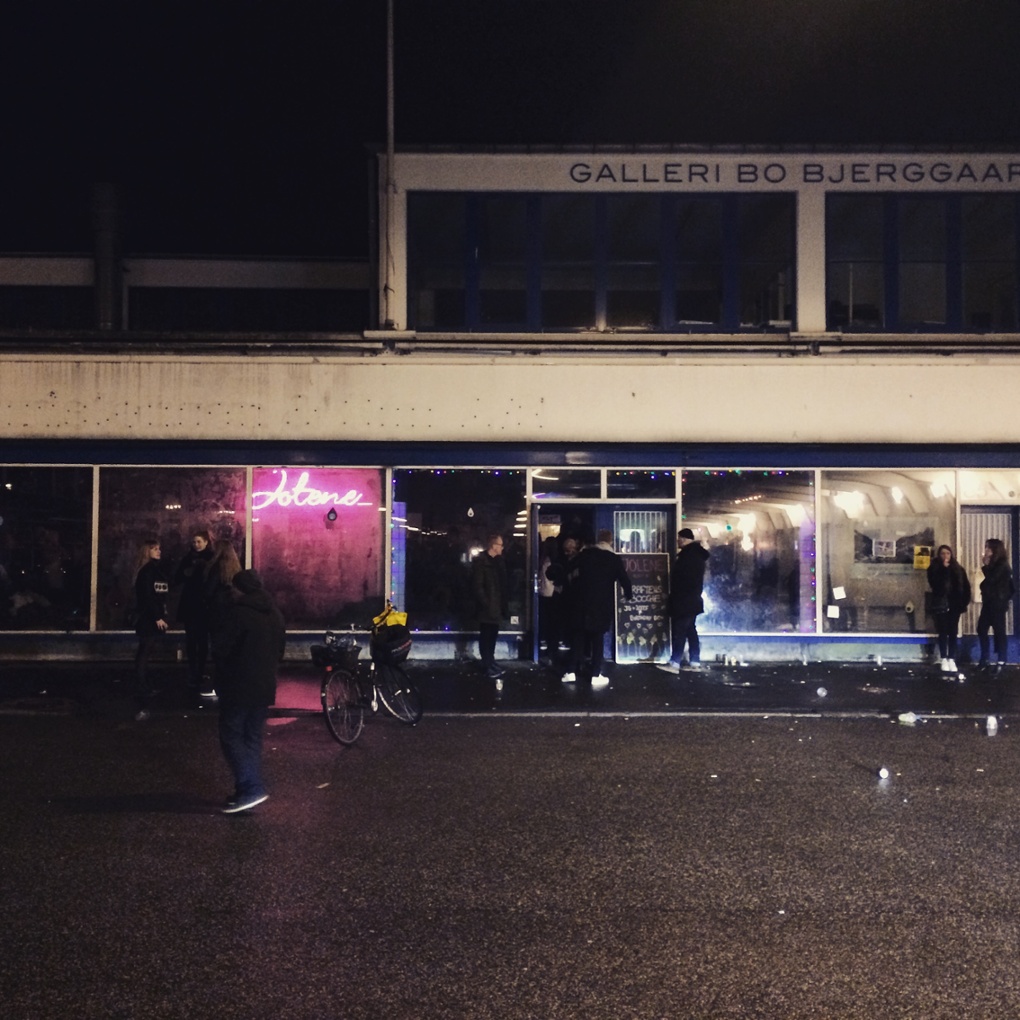
Jolene’s pink neon sign beckons. Photograph: Will Coldwell for the Guardian
Face tingling, we head out to the city’s Meatpacking district (Kødbyen). Inspired by Manhattan’s own historic butcher zone, over the past decade the low-rise industrial area has developed into a creative neighbourhood. Or as Daniel puts it: “Restaurant, restaurant, bar, slaughterhouse, restaurant.” We stop at Mesteren & Lærlingen for a couple more drinks. The busy corner bar is illuminated outside by coloured bulbs and inside a DJ spins reggae and funk from a tiled booth. It’s always rammed by 1am, I’m told, but that doesn’t stop people filling the street outside to drink and smoke till late.
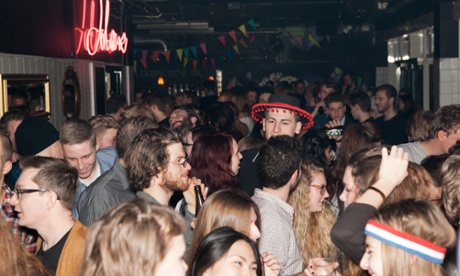
Party time: Jolene bar in the Meatpacking district. Photograph: Ingi Arnason
The area is primed for bar-hopping. We make our way around the corner to one of the district’s rowdiest venues; kitsch, colourful, bar/club, Jolene. With a pink neon sign beaming through the humid windows, the always-free always-dancing venue is also host to a residency by Daniel’s crew, the Copenhagen Underground Posse. That night, however, it’s another regular at Jolene, Fyraftensboogie, a “raggadiskotek” party, with local producer 2000F spinning classic disco and boogie tracks, punctuated by dub sirens and spin backs, while partner JG hypes the crowd. Luther Vandross smoothes his way out of the sound system and people spill their drinks barging through the dancefloor. It’s sweaty.

Grafitti covered techno club, KB18. Photograph: Andris Bergs
Around 2am we tear ourselves away and go to a completely different club on the other side of the Meatpacking district, Kb18. Dark and dingy – the toilets look like what would happen if Jackson Pollock did tagging – it’s a metal venue during the day before switching to techno after midnight. Inside Najaaraq, who DJs under the name Courtesy, and Emma are spinning bouncy techno along with all-girl Apeiron Crew. Often open until 8am, the seating in the main room consists of wooden pallets and old sofas, illuminated with candles, adding to the dungeon feel and making it the inevitable final stop for the night.
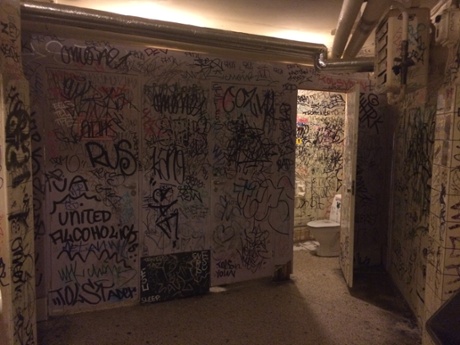
If Pollock did tagging: the toilets in Kb18. Photograph: Will Coldwell for the Guardian
The following evening starts at one of the small, alternative venues Najaaraq described earlier. Palmspree design shop, back in Nørrebro, is hosting a showcase by Rare Nights, another young collective making an impression on the city. Beers are normally priced, which is amazing (even a Londoner can feel hard done by in Copenhagen) and around 30 people are there to pay attention to the first live sets of a pair of up-and-coming producers.
After the show we cycle to Log Lady. Just behind the city’s main shopping street, the Twin Peaks-inspired bar is dolled up with stuffed owls, chandeliers and lots of gold things. “It’s a good place to see a lot of the DJs that could play at Culture Box, but not playing techno … they’ll play disco, funk, bar-friendly weird music,” says Najaaraq. Behind the decks local legend Steen Kong is DJing rare grooves with a well placed touch of Keith Mansfield as the bar quickly fills up for the evening.
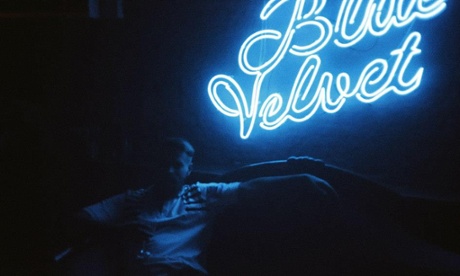
If this was still the 90s...Blue Velvet. Photograph: Dennis Morton
Part of Log Lady’s success is down to its discerning owner Henriette Hartmann Petersen and booking agent Josefine Winding. It’s not just a classy bar – the DJs who play there are carefully curated. The same goes for the pair’s latest project, Blue Velvet, a small-capacity basement club also in the city centre that opened last November. “They spent a lot of money doing it up and making it not creepy, like it was before,” says Najaaraq as we enter. “Now it’s like somewhere people might have gone to take coke in the 90s.” Inside, Daniel – aka Dee Brown – is playing soulful, nostalgic house, which fits superbly with the smooth, kitsch, Vice City-style venue.
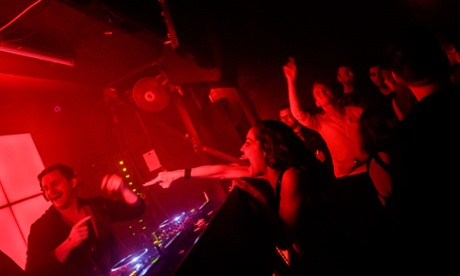
Culture Box, the central venue for Denmark’s electronic music scene. Photograph: Flemming Bo Jensen
As it hits 2am we leave for Culture Box, Copenhagen’s flagship electronic music venue. Now in its tenth year, the club gets government support to promote the genre, resulting in the most interesting international lineups in the city; that night Chicago house master Marshall Jefferson is on the bill. Launched by DJ, producer and Echocord label owner Kenneth Christiansen the old-school style venue has been invaluable in providing a platform where leading worldwide acts can mix with the best of Denmark and Scandinavia’s own pool of artists.
And, as the Dunkel Radio crew explain, in those last 10 years the scene in the city has flourished. This year saw the launch of Sonar Copenhagen, an offshoot of the ever-expanding Barcelona music festival, and a new addition to the city’s existing roster of electronic music events that includes the likes of Strøm – “like a lobby organisation to get more people to listen to electronic music”. Meanwhile, more left-field events such as Søndagsvenner, a groovy outdoor summer event series run by a team including Josefine of Blue Velvet and Daniel, and now in its third year, shows the creative, light-hearted touch behind partying in the capital. “People like to play around a bit more here and it’s not so serious,” says Najaaraq, who, despite her refined taste in music, has DJed dressed up as a hotdog for one of Apieron Crew’s infamous sausage-themed parties. “And we have exactly the same artists playing here as you’ll find in Berghain … just in spaces for a couple of hundred people.”
Flights were provided by easyJet. Fares from London (Gatwick, Luton and Stansted) to Copenhagen start at £24.99 one-way. Easyjet also flies to Copenhagen from Bristol, Edinburgh and Manchester. Accommodation was provided by Urban House. Doublesfrom £70, dorm room beds from £21.
This article originally appeared on guardian.co.uk
This article was written by Will Coldwell from The Guardian and was legally licensed through the NewsCred publisher network.
![]() https://images1.newscred.com/cD1jMDY5MGZkNDEwNjM3N2E4YTlmZGUxZDNjODcxZGVhMSZnPWZjMWQ0ODgxY2RkYmUxZjNjYjFiNGM2NTIzNWFhZDZj
https://images1.newscred.com/cD1jMDY5MGZkNDEwNjM3N2E4YTlmZGUxZDNjODcxZGVhMSZnPWZjMWQ0ODgxY2RkYmUxZjNjYjFiNGM2NTIzNWFhZDZj